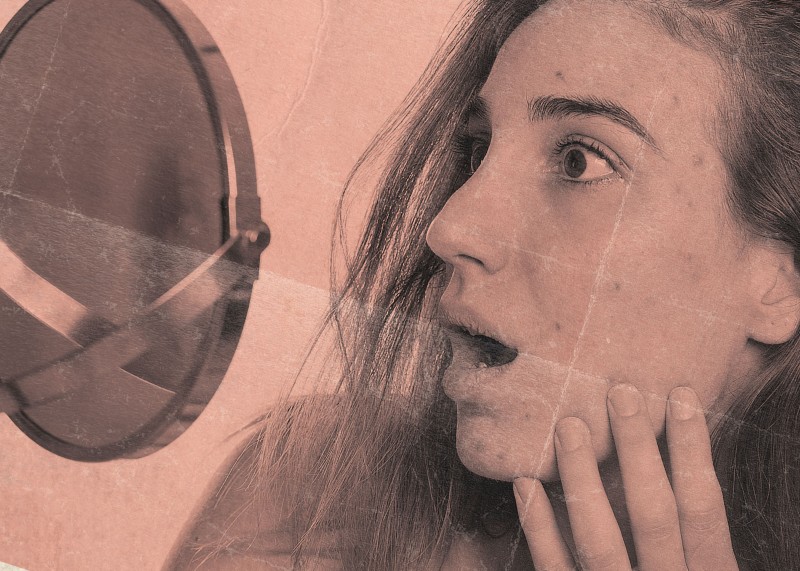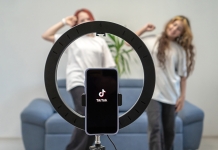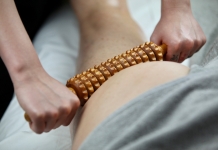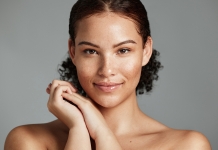Spot the issue: How to treat adult acne in the salon

Once they pass their teenage years, many people breathe a sigh of relief that the spots stage is over – but the fact is, you
can get acne at any age, even if you've never suffered from it
before. Harsh but unfortunately true.
“Many generally think that acne is only related to puberty – a teenage issue from a surge of hormones, growth and development – and to have acne in adult years through the 20s, 30s and 40s is not natural: wrong!” explains Virginie Claire, the distributor of PHYT'S organic skincare.
She continues:
“Acne can come in many forms and for many reasons and is ageless. When meeting clients and discussing factors influencing their skin, one major common factor is stress. Stress alone is inflammatory and over time can set off a cascade of issues.
“Our skin reflects internal disturbances and quite commonly, acne can develop. It may not always be automatic and can take several months to a few years to develop. Our hormones are very slow acting, and their effects linger and are slow to dissipate.
“It can be difficult to bring an understanding to clients of why their skin is behaving in such a way, many believing it must be down to oil in their skin: they then proceed to self-prescribe protects that strip the skin of oils, leaving it more dehydrated and aggravating the problem of redness and swelling further. In many cases, the acne will present on a skin that is dehydrated or dry: this shows that acne does not only pertain to an oily skin.”
Many other factors can contribute towards breakouts, including poor sleep, anxiety, a diet high in sugar, fat or processed food, hormonal issues including contraception, polycystic ovaries and menopause, and bacterial infections.
Victoria Schofield, educator with Dermalogica, says:
“Spots occur due to a specific type of breakout-causing bacteria called Proprionibacterium Acnes causing a mini infection in the skin. You are more susceptible to breakouts when hormones fluctuate and increase skin oils, a natural food source for these bacteria. Poor skin care regimens, pollution and comedogenic products can also trigger breakouts.
"Never pick or squeeze any inflamed lesions as this will prolong the infection and led to scarring. Choose products that can respect your skins microflora. Good bacteria on your skin actually help control the growth of breakout-causing bacteria and promote healthy skin functioning. Newer targeted treatments include technology that has powerful antibacterial effects without impacting the critical good microflora.”
Treating the issue
The good news is that treatments are getting increasinly effective and fast-acting, especially if you and your client can pinpoint the trigger and eliminate this from their lifestyle where possible. Acne is a troubling skin condition, and it often prompts a client to seek the services of a skin therapist for the first time. Fix the issue and you potentially have a client for life.
“When the skin changes or presents with something such as acne,going to a reputable skin therapist is so important for advice on how to treat and use homecare correctly,” says Virginie. “If there is an infection, of course a doctor may be required but medically, most will prescribe topical cortisone creams, hydrogen peroxide or possibly internal drugs such as long term antibiotics, tetracycline, roaccutane etc. These still do not teach us how to bring comfort, soothing and balance back to the skin, which can make a huge difference. If it is a particularly bad bout of acne, skincare and medical advice can work hand in hand. Diet,stress, anxiety and hormones are all factors that should tie in with every consultation also. It is not one reason that acne develops, so it is best tofind root causes!”
Clare O'Hanlon, business development manager with Juliette Armand Skincare, has the following advice for dealing with acne:
“Overall, good health is a must: sleep 8-10 hours, avoid sun exposure, drink plenty of water, avoid using skincare products with excess perfume, oil and paraffin and especially comedogenic ingredients. Book a facial every month as extractions not only empty the pores of oil but also prevent the blemishes from popping up un-expectantly. Products containing Canadian Willowherb will inhibit the action of Propionibacterium Acnes, responsible for 99% of acne cases. It's also so important to not over-cleanse the skin, as the body will naturally want to produce more oil. Exfoliating with a scrub isn't recommended either as you will just be spreading the infection especially if there is a white head on it. Leave-on masks are more suitable or using Salicylic Acid and Retinol products, which also help with the scarring. Avoid snacking on sugar-based foods, alcohol and smoking. Using oil-free products is also a must because acne/oily skin go hand in hand and we definitely don't want excess oil causing even more congestion.”
Andrea O'Donnell, speaking for DIBI Milano, agrees that it's vital to look for products that are labelled ‘non-comedogenic' so they don't clog the pores, and also has the following dietary advice. She says:
“Try to reduce or avoid dairy products such as milk, butter and cheese from your diet as they can contain high levels of hormones (such as testosterone) which can lead to increased oil production and blocked pores. This is why dairy products can be linked to breakouts and acne.”
Victoria Schofield has pinpointed certain ingredients vital in the fight against acne, saying:
“To tackle acne, thorough double cleansing and professional resurfacing will work to clear congestion, however, assess overall skin condition and levels of oil. Over-stripping the skin can lead to more sensitivity and breakouts. Build the client's tolerance to professional exfoliation, increasing intensity each visit.
"Extractions are important if comedones are present but never extract pustular or inflamed lesions for risk of cross infection and scarring. For papules and pustules, layer hydrating masques over targeted serums with Niacinamide and increase penetration of actives using ultrasonic or galvanic current. It's important to focus on anti-inflammatory and wound healing for adult acne to clear infection and minimise risk for pigmentation/scarring. Always include some kind of massage to impact stress, customise the experience allowing the client to choose where they need it the most.
“For excess oil, oil-absorbing microsponges found in moisturisers and treatment products. Bentonite and Kaolin Clays are great in cleansers to absorb excess oil and impurities. To decongest the follicles, Lactic and Salicylic acid are great to reduce impactions and resurface the skin.
"To target excess sebum production at its source, look for Nordihydroguaiaretic acid, Niacinamide, Yeast extract and Zinc Gluconate. To target the P. Acnes' bacteria causing the pustules, use Tea Tree oil and Salicylic acid. And for the inflammation and wound healing benefits, use Green Tea, Spiraea Ulmaria extract, Colloidal Silver and Coneflower. Look for a system that combines this multi-pronged approach to ensure effective results.”
Technology's place
Along with using products with the right ingredients, there's a definite place for technology in dealing with the issue.
“There is a wide variety of technology available to treat acne within the beauty industry including LED, hydradermabrasion, galvanic (specific iontophoresis and desincrustation) and ultrasonic,” says Victoria.
“LED is fantastic when used with the blue emitting light combined with LED-friendly products on the skin. It has an anti-inflammatory and antibacterial effect on the skin whilst being non evasive and no downtime for the client required. Blue LED benefits the skin by photosensitises porphyrins to create oxygen, which kills the P. acnes bacteria and slows sebaceous activity.
“Hydradermabrasion is preferred over microdermabrasion for acneic skin. It's more comfortable for the client as it can be combined with ph balancing cleansers whilst still exfoliating all the excess skin cells. This then creates the perfect canvas for us as therapists to tackle the skin condition.
“Galvanic desincrustation is a process that softens and emulsifies sebum and keratin in the follicle. It's the perfect option for someone who would like extractions. An alkaline-based product is needed to help with the softening and this combined with the action of the active negative electrode, results in the “saponification” of sebum. This alkali and sebum reaction forms sodium hydroxide due to the fatty stearic acids in sebum, reacting with the alkali to form soap. In the skin, the reaction softens and liquefies sebum, and this facilitates the easier release of comedones.
“Galvanic on the positive polarity and combined with serums, gels and masques also has a calming and vasoconstrictive effect on the skin, helping to reduce sensitivity and redness. Great for inflamed acne and post extractions.
“Ultrasonic can be used during several steps of a treatment protocol. The first use of incorporating ultrasonic is for deep cleansing or exfoliation, by use of sound waves to assist in the release of dead skin cells and comedones. It can be combined with several products to help with the extraction process and creating quicker results. The second use of incorporating ultrasonic is for enhanced product penetration, this process is referred to as sonophoresis.”
Sarah McNulty, national educator at Advanced Esthetic Solutions, explains that laser too can be used. She says:
“At AES we utilise the Quanta Duetto to treat problematic skin. The treatments are painless with no downtime. We have advanced IPL with selective filters to target diffused redness in the skin and destroy bacteria decreasing the overproduction of oil and having an anti-inflammatory response. This leads to fantastic healing and aids barrier repair.
"For skin types Fitzpatrick 4 and above we then utilise the SP ND:YAG and LP ND:YAG to safely treat darker skin types targeting haemoglobin and working on the sebaceous gland to minimise secretions and pustules. The ND:YAG laser will also aid skin laxity and scar tissue improving the texture of the skin and minimising pore size. We love to stack treatments at AES so utilise MIXED TECHNOLGY, combining two lasers in one simultaneous LP pass to target, scar tissue, pigment, redness and skin tightening. This is very successful for client results and is done in 15 minutes with no downtime. Treatments can be done twice weekly in a course of four for best results.”





